Success Advice
What Every Entrepreneur Can Learn From The 4 Richest Hip Hop Moguls
While many hip-hop artists are quick to jump on the mic and talk about all the money they’ve made, none have been able to attain the success (and salary) that the following businessmen/rappers have. Their success wasn’t all due to their lyrical abilities—they all possess very business-savvy traits found in many Fortune 500 CEO’S.
We can all afford to take a lesson or two from these four formidable hip hop artists who took their empires from the studio to the “C level”.
Lessons From The 4 Richest Hip Hop Moguls
Sean “Diddy” Combs Networth: $580 Million
Diversification
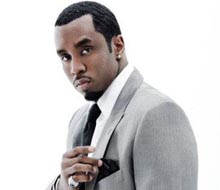 The rapper-actor-producer-designer-entrepreneur Sean “Diddy” Combs, seems to make a few million every time he changes his name. He’s gone under the names Puffy, Puff Daddy, P. Diddy, Diddy Dirty Money, and finally, Diddy.
The rapper-actor-producer-designer-entrepreneur Sean “Diddy” Combs, seems to make a few million every time he changes his name. He’s gone under the names Puffy, Puff Daddy, P. Diddy, Diddy Dirty Money, and finally, Diddy.
But Diddy (as I’ll refer to him from now on) has come a long way from his days as a party promoter at Howard University. After signing the late Notorious B.I.G. to his newly formed Bad Boy Records, his career skyrocketed, first as a producer/rapper and then as an entrepreneur.
Diddy’s empire, Bad Boy Entertainment Worldwide, owns and operates Bad Boy Records, restaurants in NYC and Atlanta, numerous clothing and fragrance lines, and helped turn Ciroc vodka into the second ultra-premium vodka in the world.
Lesson Learned Whether you are investing your time or money—diversify, diversify, diversify! Diddy didn’t stop (can’t stop, won’t stop) with music, so find multiple markets or tracks to invest in!
50 Cent’s Networth: $260 Million
Branding
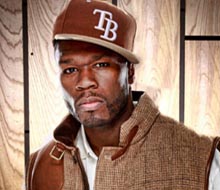 After growing up in poverty, being shot nine times, and having his debut album shelved, it seemed the 50 Cent just couldn’t catch a break. After hearing about his violent past, no record company would have him in their offices. In fact, it’s rumored that 50 Cent wrote a few songs for Diddy until the mogul saw 50 carried a gun with him to the studio.
After growing up in poverty, being shot nine times, and having his debut album shelved, it seemed the 50 Cent just couldn’t catch a break. After hearing about his violent past, no record company would have him in their offices. In fact, it’s rumored that 50 Cent wrote a few songs for Diddy until the mogul saw 50 carried a gun with him to the studio.
Finally, 50 Cent caught a break when Dr. Dre and Eminem gave him a shot.
50 quickly released hit after hit and topped the charts. But it seemed that just being a rap superstar wasn’t enough. Instead of endorsing brands, 50 Cent looked to break new ground. While just putting one’s name on a product for a flat fee was a standard practice, almost all of his deals included equity in the product on top of an endorsement fee.
Some of these deals included his own clothing line, a shoe line with Reebok, books, movies, and video games—who needs to rap? But his biggest paycheck came from an unsuspecting source when Coca-Cola acquired Vitamin Water. 50 Cent, who owned a 5% stake in the company, walked away with $200 million—10 times as much as he had made selling records.
50 Cent now owns SK Energy Drink that is taking over the Energy Shot market.
Lesson Learned: 50 Cent came into the industry with a bad stigma attached to him. When he finally got a chance to make his mark, he put his name on everything and it paid off. Put your business’s name on all your merchandise—everything from shirts and umbrellas to golf items and custom sunglasses can be branded by companies like Pinnacle Promotions—as you never know what’s going to be the true moneymaker in the end.
Dr. Dre’s Networth: $360 Million
Talent Acquisition
 Most recently, Dr. Dre made headlines (and about $150M) with his Beats by Dre Headphone line. The headphones have been endorsed by Lebron James, Lil Wayne, and college students on campuses across the world. But before the doc got his hand in business, he was known as one of the best scouts for talent in the industry.
Most recently, Dr. Dre made headlines (and about $150M) with his Beats by Dre Headphone line. The headphones have been endorsed by Lebron James, Lil Wayne, and college students on campuses across the world. But before the doc got his hand in business, he was known as one of the best scouts for talent in the industry.
As a producer and rapper, he is contributed with kick starting the careers of some of the biggest names in hip-hop: 50 Cent, Kendrick Lamar, Snoop Dogg (aka Snoop Lion), and Eminem. But it seems that the 48 year-old is focusing less on looking for upcoming rappers, and more on finding the vice presidents of his next start up.
Dre and business partner Jimmy Iovine have donated $70 million dollars to the University of Southern California to create a new degree which will blend marketing, business, product design and development, and liberal arts. The first class of students are set to begin the new degree in 2014 and may be en route to becoming music moguls themselves.
In anarticle detailing the contribution, Dre says “this is the biggest, most exciting and probably the most important thing that I’ve done in my career.”
Lesson Learned: Always be on the lookout for fresh, new talent. Whether you use local head hunters or websites such to find talent, bringing new ideas into your conference room can be the difference between winning over new clients and moving into a studio apartment.
Jay Z’s Networth: $500 Million
Networking
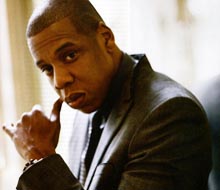 Jay said it best himself—he’s not a businessman, he’s a business, man! While he may not be the richest hip-hop mogul, he has definitely become the face of the industry. Before blowing up as a face of a genre, Jay created Roc-A-Fella Records and clothing line. Not long after, he began to dive into other industries. His business ventures range from hospitality (40/40 Club), live concert promotions (Live Nation/Roc Nation), sports management (Roc Nation Sports), and at one point was a part owner of the Brooklyn Nets.
Jay said it best himself—he’s not a businessman, he’s a business, man! While he may not be the richest hip-hop mogul, he has definitely become the face of the industry. Before blowing up as a face of a genre, Jay created Roc-A-Fella Records and clothing line. Not long after, he began to dive into other industries. His business ventures range from hospitality (40/40 Club), live concert promotions (Live Nation/Roc Nation), sports management (Roc Nation Sports), and at one point was a part owner of the Brooklyn Nets.
However, Jay’s real strength is his power of networking. Year after year, he has shown his ability to connect with musicians from different genres, CEOs from various industries, and even the leader of the free world, President Barack Obama. What other musician do you know that texts with the President?
Lesson Learned: You’re only as good as the company you keep. Jay recognized this as his music career started to turn into a business career. You can be the savviest businessman/businesswoman, but if no one knows, you’ll get nowhere. Connecting with likeminded individuals and joining industry discussions on LinkedIn could be the key to landing your dream job, securing investments for your venture, or connecting with the perfect partner.
Checkout this interesting graph of Jay-Zs Estimated Brand Value
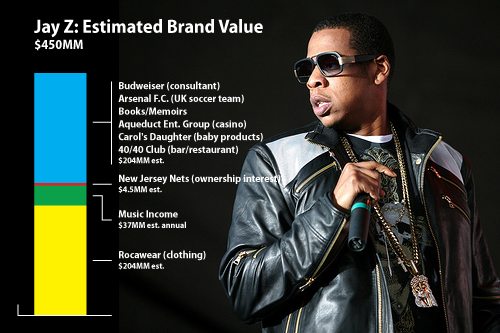
As album sales continue to drop, the music industry is becoming less and less enticing. While some artists seem to be only relying on their musical ability, others are looking elsewhere to retain their wealth. Whether you look up to 50 Cent’s branding marvels or the networking skills of Jay Z, these artists are prime examples of savvy rappers turned business moguls.
Life
10 Research-Backed Steps to Create Real Change This New Year
This New Year could finally be the one where you break old patterns and create real, lasting change.

Every New Year, we make plans and set goals, but often repeat old patterns. (more…)
Change Your Mindset
The Silent Skill That Makes People Respect You Instantly
What truly earns respect and why most people go about it the wrong way

Everybody craves respect but not everyone earns it. Some people believe that a title, years of experience, or a position of authority automatically entitles them to respect. (more…)
Entrepreneurs
The Essential Skills Every Entrepreneur Needs In 2026
Success in the digital age isn’t about luck. It’s about mastering the skills that separate dreamers from doers.

When I was 22 years old, I started my first side hustle as a ghostwriter. (more…)
Did You Know
The Success Patterns You Inherited (And Didn’t Notice)
Your family history may hold the key to why you think, act, and feel the way you do today.

Who are you? Your experiences and your family’s narratives and legacies contribute to your identity. Your ancestry contains individual traits and forces that have been inherited over the years. It also carries the fights and victories of your forebears and older family members. (more…)
-

 Personal Development4 weeks ago
Personal Development4 weeks agoThis Silent Habit Might Be Sabotaging Your Career
-

 Business4 weeks ago
Business4 weeks agoWhy Your E-Commerce Fulfilment Is Probably Broken (And How to Fix It)
-

 Shift Your Mindset3 weeks ago
Shift Your Mindset3 weeks ago11 E’s That Define Every Great Leader And Why Most People Miss Them
-

 Did You Know3 weeks ago
Did You Know3 weeks agoThe Success Patterns You Inherited (And Didn’t Notice)
-

 Business3 weeks ago
Business3 weeks agoThe Hidden Money Pit in Your Operations (and How to Use It)
-

 Entrepreneurs2 weeks ago
Entrepreneurs2 weeks agoThe Essential Skills Every Entrepreneur Needs In 2026
-

 Change Your Mindset2 weeks ago
Change Your Mindset2 weeks agoHow to Turn Your Mind Into Your Greatest Asset (Instead of Your Enemy)
-

 Change Your Mindset1 week ago
Change Your Mindset1 week agoThe Silent Skill That Makes People Respect You Instantly





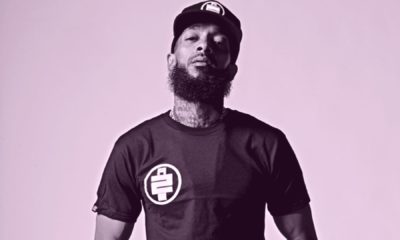



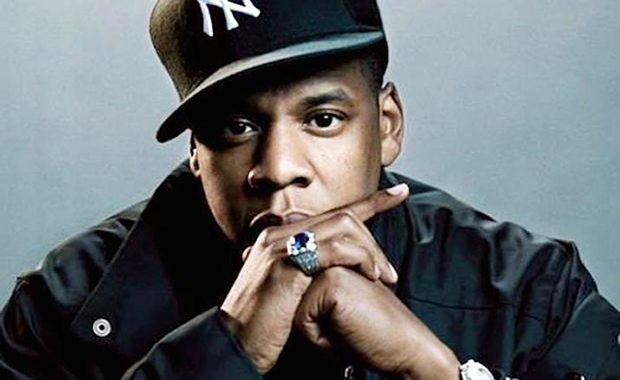












8 Comments